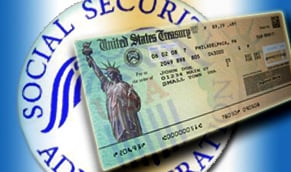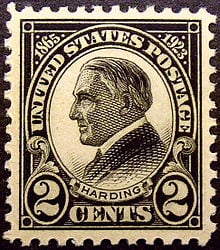There is a great debate growing about when is the best time to start taking Social Security. There are pro's and con's on either side of the debate. But really, it all boils down to a very personal decision based on your specific situation.

The factors of when to take Social Security depend on two considerations: 1) the quantitative information, your work status between age 62 and your full retirement age; your life expectancy; your marital status; and your desire to protect your assets; and 2) the qualitative information, what are your goals during retirement, when do you anticipate slowing down, will you have the stamina or interest to pursue things later in life, say, over age 80, etc. This will be a two part article, first I will discuss the quantitative factors how each of these may affect your personal situation, next week I will discuss, perhaps the more important, qualitative factors.
If you have not yet reached your full retirement age as defined by Social Security (for most people that's about age 66) and you are still working, it will probably not make sense to start receiving your Social Security benefits. Why? Because if you earn over the Social Security earnings limit, your Social Security benefits will be reduced. Once you reach full retirement age your benefits will not be reduced regardless of other income you may earn (although your benefits may be taxed.)
If you live to your standard life expectancy, believe it or not, you will get almost the same amount whether you take Social Security early, or wait until later to take it. To see how this works, it helps to look at an example using real numbers, such as the one below.
Steve is age 61 and he is deciding when to take social security. Here are the numbers from his Social Security statement showing what he will get at which age:
- Age 62: $1,643 ($19,716 per year)
- Age 66: $2,238 ($26,856 per year)
- Age 70: $3,009 ($36,108 per year)
A 62 year old man has a life expectancy of nineteen years, or age 81. Social Security has a cost of living adjustment which provides an increase in benefit of 2% a year, but for now we’ll factor it without that. Here are the three possibilities:
- Assume Steve starts receiving benefits at 62. He gets $1,643 per month, or $19,716 per year, for 19 years. This is a total of $374,600.
- If he waits until age 66, he gets $2,238 per month, or $26,856 per year, for 15 years. He'll receive a total of $402,870.
- If he waits until age 70, he gets $3,009 per month, or $36,108 per year, for 11 years. He'll receive a total of $397,190.
Clearly, if Steve lives to life expectancy, he maximizes his lifetime income by taking Social Security benefits at age 66. When you factor in the 2% annual increases, Steve would expect the following total amounts:
- $450,320 if he started benefits at age 62
- $502,720 if he started benefits at age 66
- $514,800 if he started benefits at age 70
If Steve lives to age 81, he will maximize his lifetime income by waiting until age 70 to begin taking his Social Security benefits. In Steve's case, his break even age matches the average breakeven point which is 80, meaning if he waits until age 70 to begin benefits, he must live to at least age 80 to receive the same total dollars he would have received if he started taking benefits earlier. If you don't think you'll live past 80, you're better off claiming earlier. If you are married and think one of you will live past 80, it might make sense to delay.
Morningstar's Blanchett wrote a report, "When to claim Social Security" in The Journal of Personal Finance. He said "We find that females, married couples, retirees who expect to invest in relatively conservative portfolios during retirement, and retirees who have longer life expectancies are likely to benefit most from delaying Social Security benefits. On the other hand, retirees who have shorter life expectancies or invest more aggressively and believe they can achieve a relatively high return on their retirement portfolios would likely be better off taking Social Security earlier."
There are a lot of dollars at stake, and of course no one knows their life expectancy with certainty. However certain health and lifestyle factors will affect your own personal life expectancy. Just as an insurance company would do underwriting, I would suggest you do an analysis on your own personal life expectancy, using a life expectancy calculator that will ask you health and lifestyle related questions.
For singles, life expectancy is one of the primary factors to consider. For married couples, you have to consider more than just life expectancy. The way Social Security survivor benefits work, when you are married, upon the death of the first spouse, the surviving spouse can keep the larger of either their own benefit or their spouse's benefit. Because of this, there are ways for couples to coordinate how and when they each take benefits so they can get more as a couple.
I'm a strong believer in leaving an inheritance for my posterity. Using up retirement savings in lieu of potentially one day getting a larger Social Security check just doesn't achieve this goal. It makes more sense to use money that won't be there after I'm gone - i.e. Social Security - than to burn through things like cash savings, retirement account funds, and home equity. Personally, I'd rather try to save these assets, using Social Security (a source of income that I won't be able to pass on to descendants) to pay the bills rather than dipping into personal assets.
There are also a variety of strategies regarding Social Security. One is a switching strategy, which allows one spouse to claim another's benefits. For example, a married man who is 67 and doesn't need the benefits can claim his wife's benefits until he's 70, and let his own benefits continue to grow. When he turns 70, he can switch to his own benefits. Another switching strategy: A divorced woman who is 67 and had been married for at least 10 years can claim her ex-husband's benefits until she reaches 70, then switch to her own.
When to begin taking Social Security benefits is a very personal decision. Knowing the rules will help insure that you don't needlessly waste months of benefits that you could have received. If you have questions about when you should receive Social Security benefits, feel free to contact us for a free consultation. If you know of someone who may be at the threshold of this decision pass along this article to them, you may just save them some grief.
Note: Next week qualitative issues surrounding Social Security.
A Special thanks to Dan Perkins, PhD. who helped with these articles.



 My brother-in-law use to take me backpacking when I was a teenager in the High Sierras. There is no place like the High Sierras in the world (so I am told by the many people we met on the trail from other countries). The time spent there I learned again to love our country and its amazing beauty. I have traveled to many of the other states in the Union on business, and I am always amazed at what a wonderful country we have. It is truly special. I personally believe that God put all the right elements here so a nation could thrive and spread goodness throughout the world.
My brother-in-law use to take me backpacking when I was a teenager in the High Sierras. There is no place like the High Sierras in the world (so I am told by the many people we met on the trail from other countries). The time spent there I learned again to love our country and its amazing beauty. I have traveled to many of the other states in the Union on business, and I am always amazed at what a wonderful country we have. It is truly special. I personally believe that God put all the right elements here so a nation could thrive and spread goodness throughout the world. We have the world’s strongest best trained military. Now I know many people say we dwell too much on the military or spend too much on the military, etc. I have heard all of that, including we should not be in this country or that country, we should not be the world’s police force – we should just stay home and mind our own business. The reality of being the world’s police force is this, if we are not there to serve, some other super power will be called in to serve. So would we rather have China, Russia, or someone else in those countries? What would be the political frame work they would leave behind? Now I know that not everything is rosy with the military there are a few bad apples that commit crimes, etc. But by and large they are great people who serve and truly bless the lives of the people in those countries. An opportunity to help these struggling countries blesses everyone involved.
We have the world’s strongest best trained military. Now I know many people say we dwell too much on the military or spend too much on the military, etc. I have heard all of that, including we should not be in this country or that country, we should not be the world’s police force – we should just stay home and mind our own business. The reality of being the world’s police force is this, if we are not there to serve, some other super power will be called in to serve. So would we rather have China, Russia, or someone else in those countries? What would be the political frame work they would leave behind? Now I know that not everything is rosy with the military there are a few bad apples that commit crimes, etc. But by and large they are great people who serve and truly bless the lives of the people in those countries. An opportunity to help these struggling countries blesses everyone involved.

